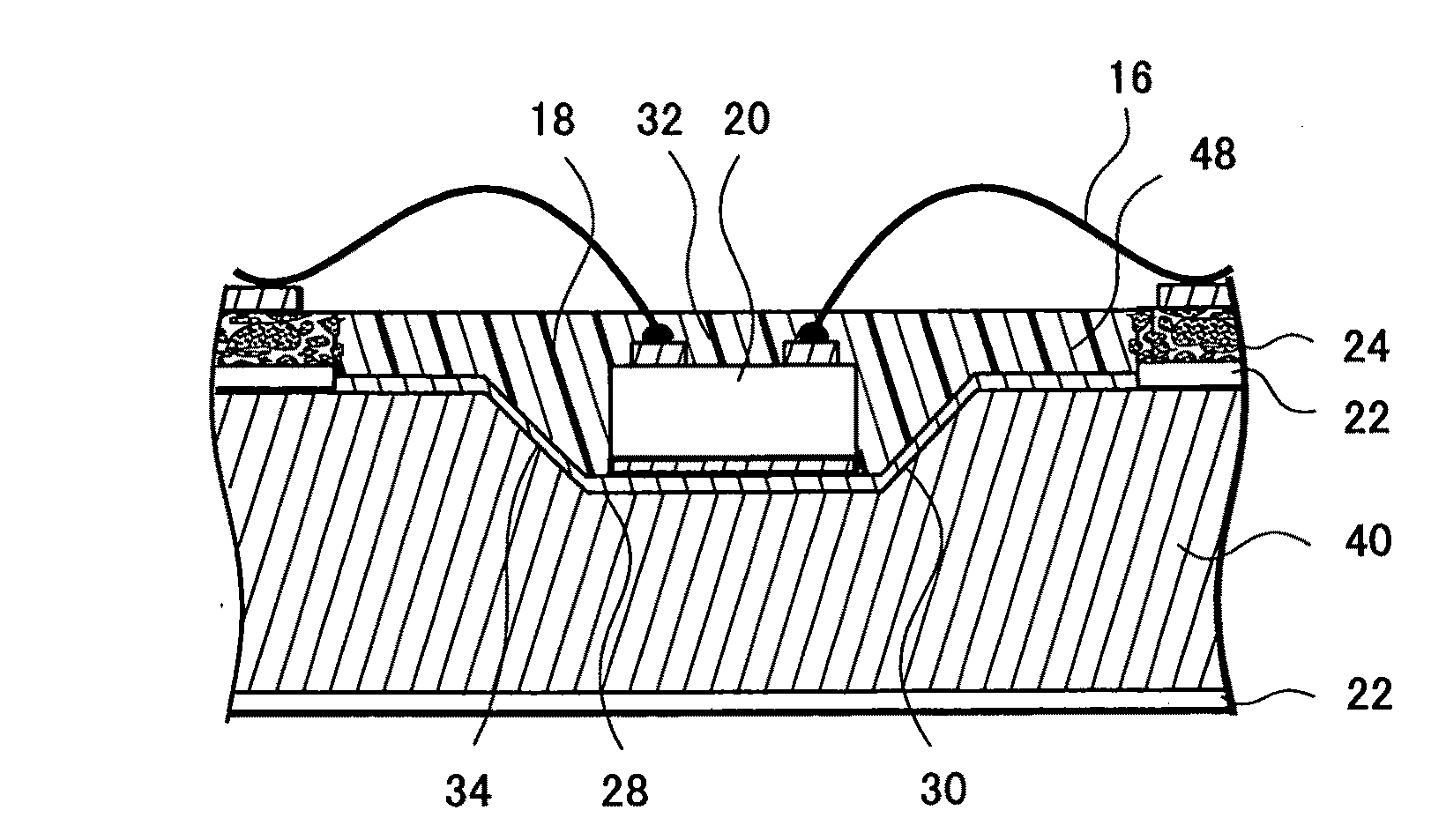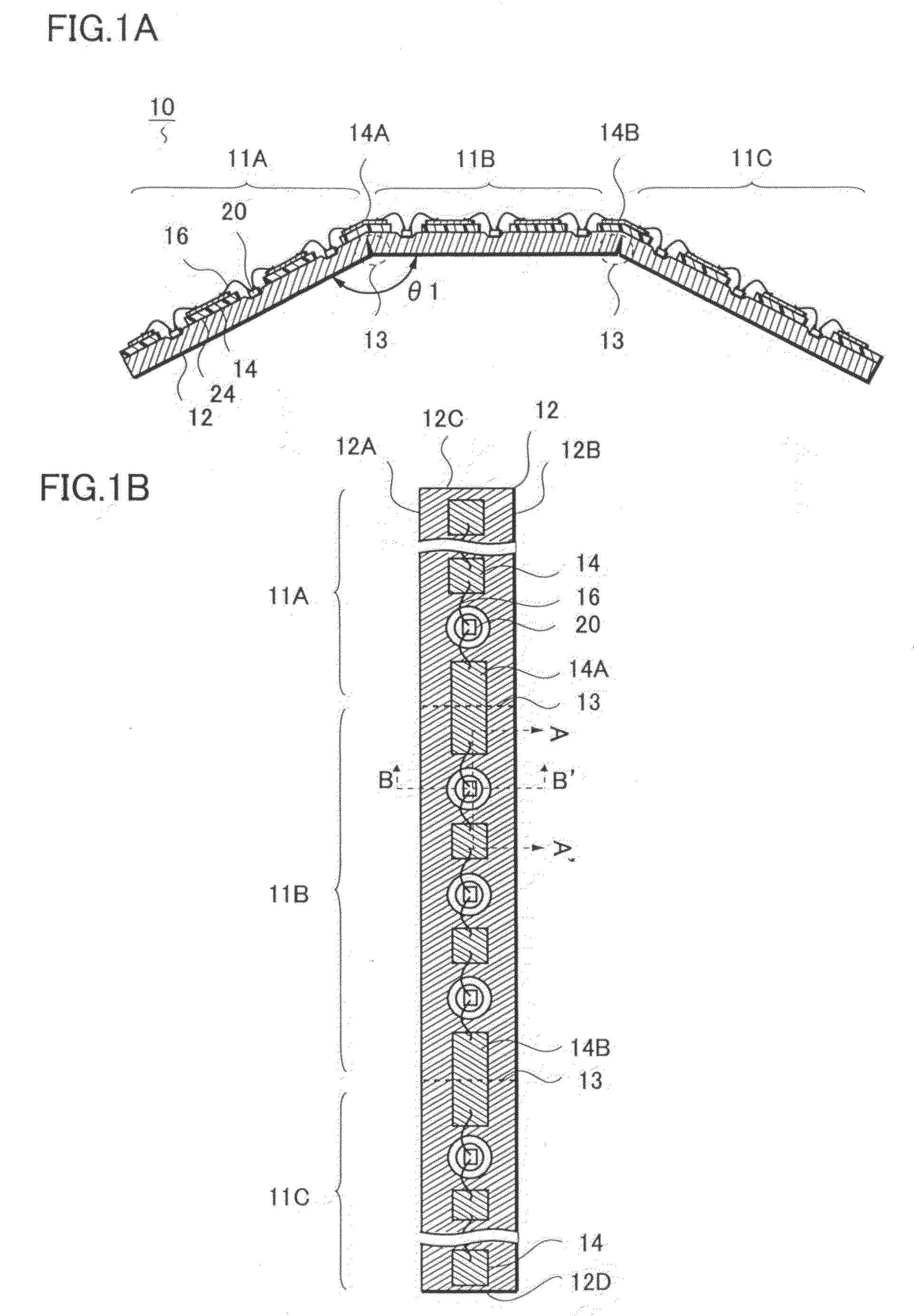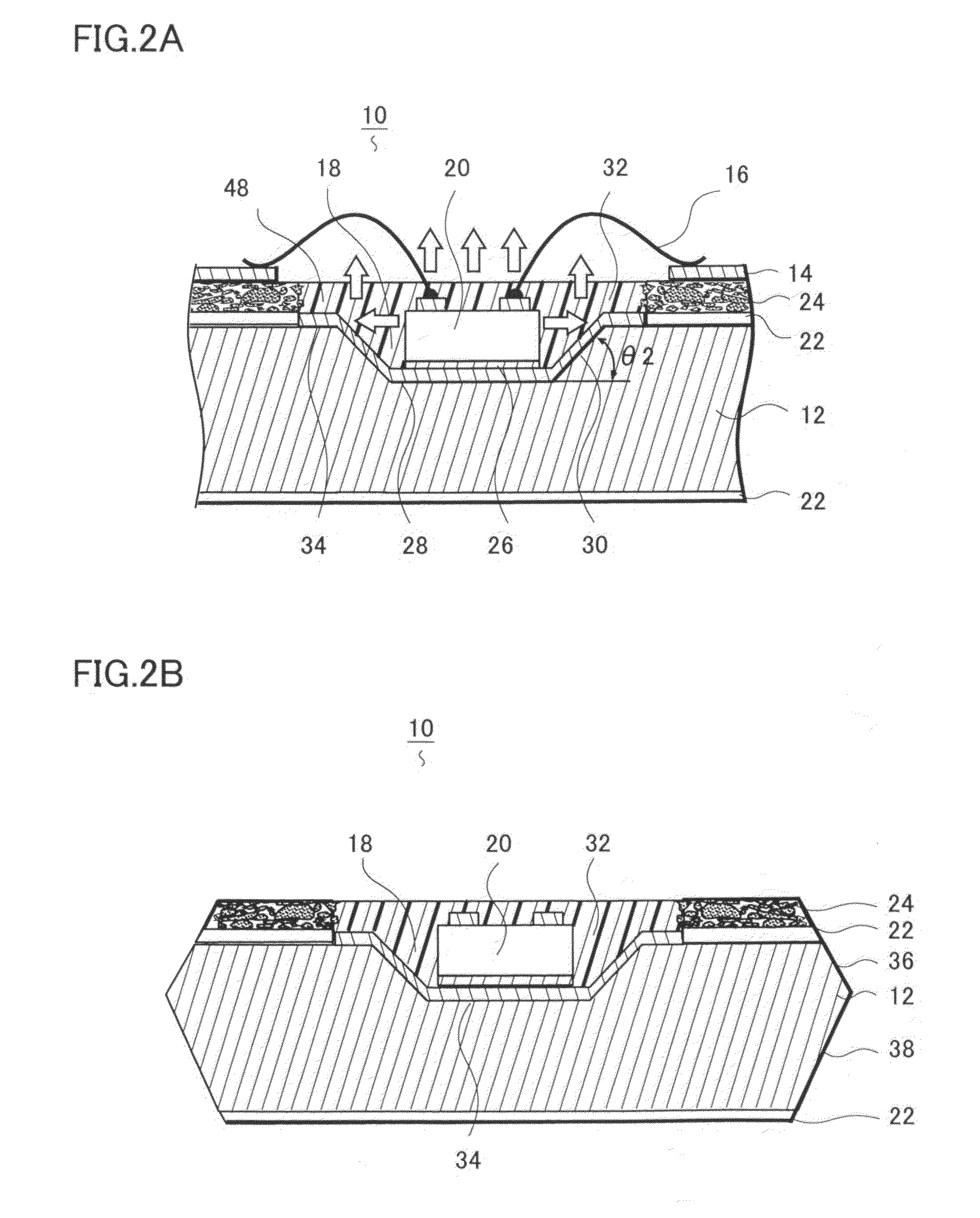Light emitting module and method for manufacturing the same
a technology of light-emitting modules and manufacturing methods, which is applied in the manufacture of printed circuits, printed circuit aspects, metal core circuits, etc., can solve the problems of large heat dissipation, poor heat dissipation effect, and the inability to desirably dissipate heat from the led to the outside, and achieves high heat dissipation properties
- Summary
- Abstract
- Description
- Claims
- Application Information
AI Technical Summary
Benefits of technology
Problems solved by technology
Method used
Image
Examples
first embodiment
Configuration of Light Emitting Module
[0030]In this embodiment, a configuration of a light emitting module 10 will be described with reference to FIG. 1A to FIG. 3B.
[0031]FIG. 1A is a cross-sectional view of the light emitting module 10. FIG. 1B is a plan view of the light emitting module 10 seen from top.
[0032]As shown in FIG. 1A, the light emitting module 10 mainly includes: a metal substrate 12; an insulating layer 24 covering the upper surface of the metal substrate 12; a conductive pattern 14 formed on the upper surface of the insulating layer 24; and a light emitting element 20 fixedly attached to the upper surface of the metal substrate 12 and electrically connected to the conductive pattern 14.
[0033]The light emitting module 10 has the multiple light emitting elements 20 mounted on the upper surface of the single plate-like metal substrate 12. These light emitting elements 20 are connected to each other in series via the conductive patterns 14 and thin metal wires 16. By sup...
second embodiment
Method for Manufacturing Light Emitting Module
[0074]Hereinafter, a method for manufacturing a light emitting module 10 with the above-described configuration will be described with reference to FIG. 4A to FIG. 13B.
[0075]First step: see FIGS. 4A to 4C
[0076]As shown in FIGS. 4A to 4C, firstly, a substrate 40 that is a base member for the light emitting module 10 is prepared, and a conductive pattern is formed.
[0077]Refer to FIG. 4A. At first, the substrate 40 is made of a metal that has, for example, copper or aluminium as the main material, and has a thickness of approximately 0.5 mm to 2.0 mm. The planar size of the substrate 40 is, for example, approximately 1 m×1 m, and the single substrate 40 produces multiple light emitting modules. When the substrate 40 is a substrate made of aluminium, the upper surface and the lower surface of the substrate 40 are covered with the above-described anodized film.
[0078]The upper surface of the substrate 40 is entirely covered with an insulating ...
third embodiment
Description of Experimental Results
[0122]In this embodiment, with reference to FIGS. 14A to 14E, description will be given of experimental results by which the influence of metal-substrate bending on a conductive pattern is confirmed. FIG. 14A is a photograph of a bent metal substrate, taken from a side of the metal substrate. FIGS. 14B, 14C, 14D and 14E are Scanning Electron Microscope (SEM) images obtained by taking a photo of conductive patterns at bent portions after metal substrates are bent, while the metal substrates are heated at various temperatures.
[0123]As shown in FIG. 14A, a metal substrate is bent according to the method described in the second embodiment. The upper surface of the metal substrate is covered with an insulating layer made of a polyimide insulating resin. A conductive pattern is formed on the upper surface of this insulating layer. Here, an angle θ4 formed by bending the metal substrate is 148° in the actual measurement.
[0124]FIG. 14B is an SEM image obta...
PUM
 Login to View More
Login to View More Abstract
Description
Claims
Application Information
 Login to View More
Login to View More - R&D
- Intellectual Property
- Life Sciences
- Materials
- Tech Scout
- Unparalleled Data Quality
- Higher Quality Content
- 60% Fewer Hallucinations
Browse by: Latest US Patents, China's latest patents, Technical Efficacy Thesaurus, Application Domain, Technology Topic, Popular Technical Reports.
© 2025 PatSnap. All rights reserved.Legal|Privacy policy|Modern Slavery Act Transparency Statement|Sitemap|About US| Contact US: help@patsnap.com



